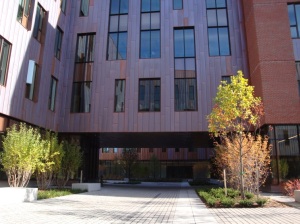 Over 30 members of EcoHusky and the EcoHouse learning community got up bright and early on Saturday, October 8th, to volunteer at the Hartford Marathon in Bushnell Park. After a quick power nap on the bus, volunteers were ready for a day of excitement, positivity, and environmental awareness. Upon arrival at Bushnell Park in Hartford, volunteers mapped out the best locations for compost and heatsheet bins, as their primary responsibility for the day was to manage the waste stations throughout the park to ensure that runners and race-goers correctly disposed of food, recyclables, and foil blankets.
Over 30 members of EcoHusky and the EcoHouse learning community got up bright and early on Saturday, October 8th, to volunteer at the Hartford Marathon in Bushnell Park. After a quick power nap on the bus, volunteers were ready for a day of excitement, positivity, and environmental awareness. Upon arrival at Bushnell Park in Hartford, volunteers mapped out the best locations for compost and heatsheet bins, as their primary responsibility for the day was to manage the waste stations throughout the park to ensure that runners and race-goers correctly disposed of food, recyclables, and foil blankets.
The Hartford Marathon Foundation has expressed strong interest in environmental initiatives over the years, with compost management as a top priority on the day of the event. Their composting partner is the KNOX Park Foundation, a nonprofit organization that partners with residents, businesses, and government to make Hartford more sustainable. This year, all of the food items on the race menu were compostable, including the soup, fruit, deserts, plates and napkins. The Marathon planners were also conscious in their other purchasing decisions, as the cups provided at the drink stations were recyclable as well.
 The Marathon’s efforts to reduce waste at the event are commendable; however, it was up to the volunteers from EcoHusky and EcoHouse to ensure that those efforts were seen through. Composting and recycling can have such positive waste diversion impacts, but only if the items are separated into the correct bins. Not only did volunteers ensure that this was done at the event, they also educated race-goers about recycling and composting so they could be more sustainable in their daily lives. Additionally, they tracked the bags of compost, weighing hundreds of pounds over the course of the day.
The Marathon’s efforts to reduce waste at the event are commendable; however, it was up to the volunteers from EcoHusky and EcoHouse to ensure that those efforts were seen through. Composting and recycling can have such positive waste diversion impacts, but only if the items are separated into the correct bins. Not only did volunteers ensure that this was done at the event, they also educated race-goers about recycling and composting so they could be more sustainable in their daily lives. Additionally, they tracked the bags of compost, weighing hundreds of pounds over the course of the day.
“I definitely thought the volunteers had a positive impact on the people attending the Marathon. Most race-goers were eager to learn, asking us questions to make sure they were throwing their waste out in the appropriate bins.” -Eddie McInerney, EcoHusky member
In addition to manning the waste stations throughout the park, EcoHusky also had an environmental awareness tent, with an interactive basketball and recycling-themed game that encouraged players to think about what items are recyclable, compostable, and trash, then throw the items into the correct basketball hoops.
 “Race-goers were attracted to the EcoHusky tent because of its peculiar set up – needless to say, no one else had a conglomeration of “waste” items and handmade basketball hoops scattered around their table. For such a simple and low budget idea, we still managed to make a big impact with the people we spoke to.” -Katie Main, EcoHusky Treasurer
“Race-goers were attracted to the EcoHusky tent because of its peculiar set up – needless to say, no one else had a conglomeration of “waste” items and handmade basketball hoops scattered around their table. For such a simple and low budget idea, we still managed to make a big impact with the people we spoke to.” -Katie Main, EcoHusky Treasurer
Each year, members of EcoHusky and EcoHouse refer to the Hartford Marathon as one of their favorite volunteer events. The positive atmosphere surrounding the marathon, and the receptiveness of the race-goers to the message about sustainability, consistently leave the volunteers feeling both cheerful and optimistic.






 Over 30 members of EcoHusky and the EcoHouse learning community got up bright and early on Saturday, October 8th, to volunteer at the Hartford Marathon in Bushnell Park. After a quick power nap on the bus, volunteers were ready for a day of excitement, positivity, and environmental awareness. Upon arrival at Bushnell Park in Hartford, volunteers mapped out the best locations for compost and heatsheet bins, as their primary responsibility for the day was to manage the waste stations throughout the park to ensure that runners and race-goers correctly disposed of food, recyclables, and foil blankets.
Over 30 members of EcoHusky and the EcoHouse learning community got up bright and early on Saturday, October 8th, to volunteer at the Hartford Marathon in Bushnell Park. After a quick power nap on the bus, volunteers were ready for a day of excitement, positivity, and environmental awareness. Upon arrival at Bushnell Park in Hartford, volunteers mapped out the best locations for compost and heatsheet bins, as their primary responsibility for the day was to manage the waste stations throughout the park to ensure that runners and race-goers correctly disposed of food, recyclables, and foil blankets.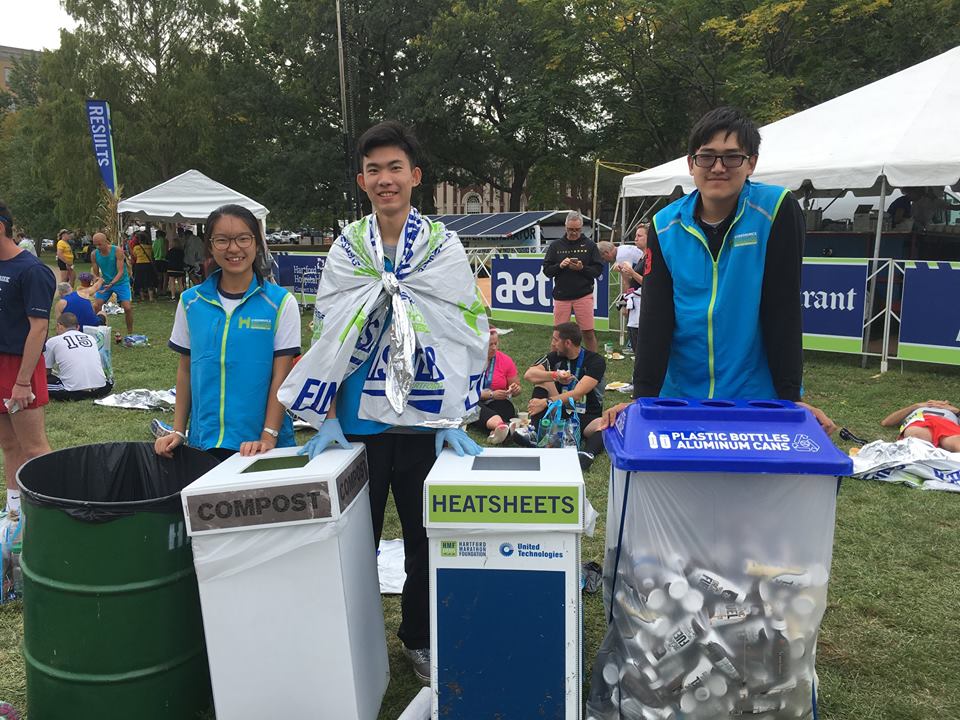 The Marathon’s efforts to reduce waste at the event are commendable; however, it was up to the volunteers from EcoHusky and EcoHouse to ensure that those efforts were seen through. Composting and recycling can have such positive waste diversion impacts, but only if the items are separated into the correct bins. Not only did volunteers ensure that this was done at the event, they also educated race-goers about recycling and composting so they could be more sustainable in their daily lives. Additionally, they tracked the bags of compost, weighing hundreds of pounds over the course of the day.
The Marathon’s efforts to reduce waste at the event are commendable; however, it was up to the volunteers from EcoHusky and EcoHouse to ensure that those efforts were seen through. Composting and recycling can have such positive waste diversion impacts, but only if the items are separated into the correct bins. Not only did volunteers ensure that this was done at the event, they also educated race-goers about recycling and composting so they could be more sustainable in their daily lives. Additionally, they tracked the bags of compost, weighing hundreds of pounds over the course of the day.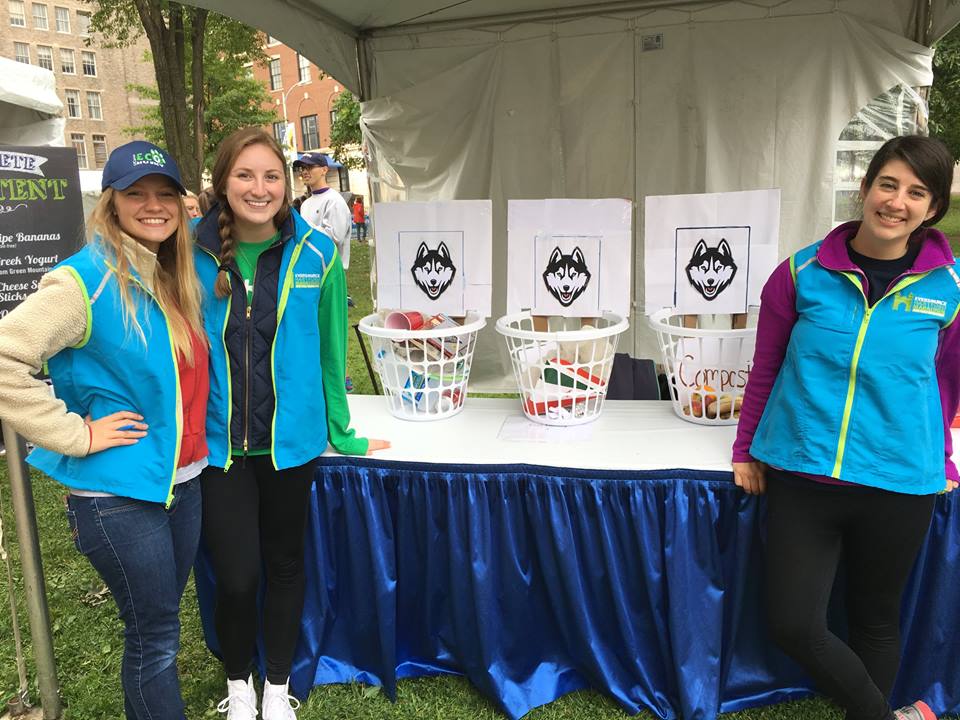 “Race-goers were attracted to the EcoHusky tent because of its peculiar set up – needless to say, no one else had a conglomeration of “waste” items and handmade basketball hoops scattered around their table. For such a simple and low budget idea, we still managed to make a big impact with the people we spoke to.” -Katie Main, EcoHusky Treasurer
“Race-goers were attracted to the EcoHusky tent because of its peculiar set up – needless to say, no one else had a conglomeration of “waste” items and handmade basketball hoops scattered around their table. For such a simple and low budget idea, we still managed to make a big impact with the people we spoke to.” -Katie Main, EcoHusky Treasurer

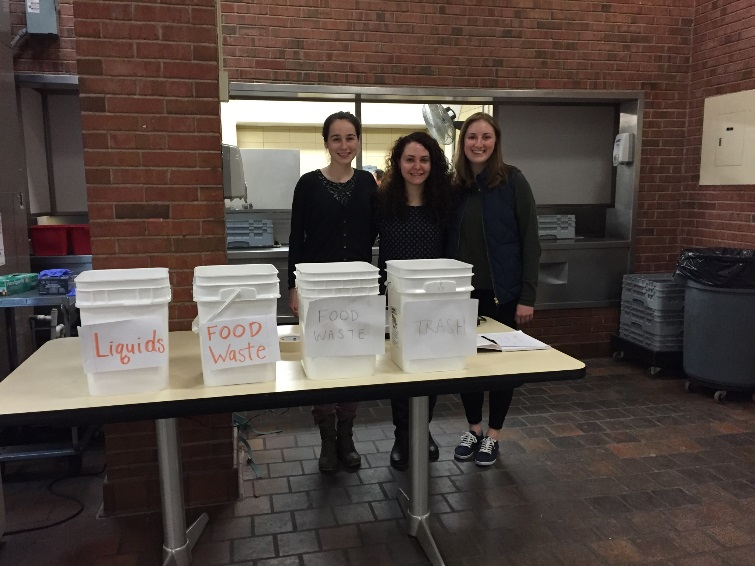 Ever think the “clean plate club” was just your parents’ invention to make you eat your vegetables? Well, think again! Finishing all of the food on your plate is actually a great way to minimize not just your carbon footprint, but also your methane footprint. When food sits in a landfill, it breaks down and produces methane, which is an incredibly potent greenhouse gas, even worse than carbon. Shockingly, nearly 40% of all the food in the United States goes to waste, which has a huge impact on the environment.*
Ever think the “clean plate club” was just your parents’ invention to make you eat your vegetables? Well, think again! Finishing all of the food on your plate is actually a great way to minimize not just your carbon footprint, but also your methane footprint. When food sits in a landfill, it breaks down and produces methane, which is an incredibly potent greenhouse gas, even worse than carbon. Shockingly, nearly 40% of all the food in the United States goes to waste, which has a huge impact on the environment.*
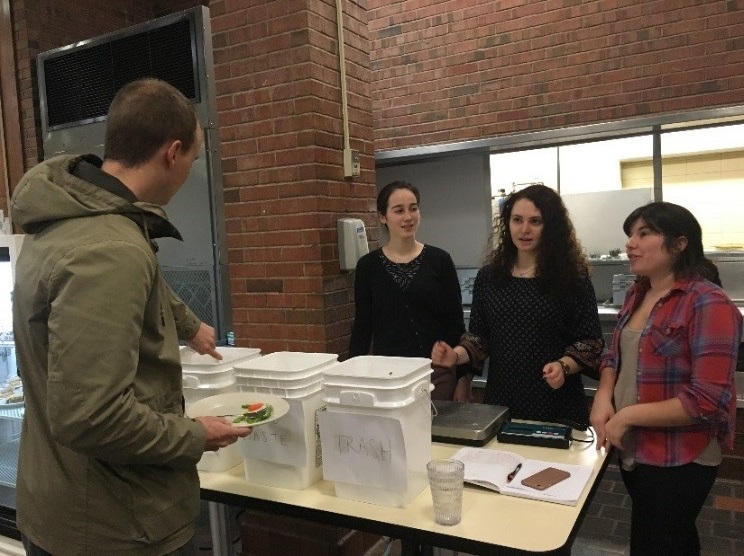
 What is a wooden nickel you may ask? A wooden nickel is a small token that you receive at the UConn Co-op when you choose not to use a plastic shopping bag to carry your purchases. You can then insert this wooden nickel into one of four bins that each represent a different charity. Every time you do this, five cents are donated to that charity at no cost to you! The charities to choose from are the UConn Campus Sustainability Fund, Joshua’s Tract Conservation and Historic Trust, World Wildlife Fund, and UConn’s Sandy Hook Memorial Scholarship. The Co-op donates the monetary equivalent of the sum of the tokens in each bin to their respective charities. This program is formally known as the Co-op Cares Bag Program, and has drastically reduced bag use since it was started in 2008. By four months into the program, the Co-op had collected a total of 22,300 wooden nickels in the bins, equaling over $1,100 in donations! Since the cost of a plastic bag is roughly five cents, the Co-op decided to turn that spending around and give back to the community, all while reducing its carbon footprint! Although the driving force of the program is to reduce the consumption of plastic bags and to produce less pollution, you can also participate by donating your own money.
What is a wooden nickel you may ask? A wooden nickel is a small token that you receive at the UConn Co-op when you choose not to use a plastic shopping bag to carry your purchases. You can then insert this wooden nickel into one of four bins that each represent a different charity. Every time you do this, five cents are donated to that charity at no cost to you! The charities to choose from are the UConn Campus Sustainability Fund, Joshua’s Tract Conservation and Historic Trust, World Wildlife Fund, and UConn’s Sandy Hook Memorial Scholarship. The Co-op donates the monetary equivalent of the sum of the tokens in each bin to their respective charities. This program is formally known as the Co-op Cares Bag Program, and has drastically reduced bag use since it was started in 2008. By four months into the program, the Co-op had collected a total of 22,300 wooden nickels in the bins, equaling over $1,100 in donations! Since the cost of a plastic bag is roughly five cents, the Co-op decided to turn that spending around and give back to the community, all while reducing its carbon footprint! Although the driving force of the program is to reduce the consumption of plastic bags and to produce less pollution, you can also participate by donating your own money.
